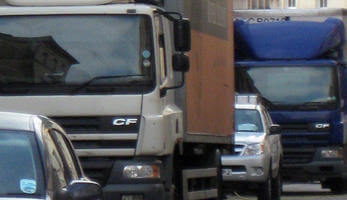Demand Management for Goods Vehicles
Thematic areas
Smart, Sustainable, Connected and Shared mobility
Summary
A feasibility study examined options for managing goods vehicles in Bath. This study was followed by the demonstration of a selected freight demand management measure.
Implementing sustainable mobility
The impact of congestion is a key concern for the World Heritage City of Bath. The contribution of freight traffic to poor air quality, noise, severance and damage to the fabric of historic buildings is disproportionate to the volume of freight traffic in the city.
Past and new survey data was collected to produce a baseline report, and a detailed feasibility study has been produced, which includes a shortlist of demonstration options, refined by the Bath Traffic Model. A demonstration project was chosen from this.
Progress
The demonstration measure was designed to make Heavy Goods Vehicle (HGV) operators aware of weight restrictions in the historic city centre of Bath. The demonstration was set up on the A4, Upper Bristol Road in Bath at the junction with Windsor Bridge Road. The section of the A4 east of this junction is subject to a Traffic Regulation Order weight limit of 7.5 tons. A variable message sign was installed on the western approach to this junction. This sign was triggered by high vehicles, giving the message that there is a weight restriction ahead. Automatic Number Plate Recognition (ANPR) cameras covering both directions were triggered by vehicle detection loops when vehicles breach the restriction. When HGVs that were not making deliveries to the area affected by the weight restriction were identified, a letter was sent to the operator informing them of the weight limit and requesting details of their journey. The information collected allowed the Council to identify vehicles that persistently breached the weight restriction. The demonstration project was completed on 30th June 2012.
Outcomes
• ANPR technology was used successfully to identify heavy vehicles on a weight restricted road in Bath. • HGV traffic in the demonstration area significantly reduced from an average of 262 HGV movements per day; to an average of 150 per day. A reduction of 112 vehicles (42.7%) • A daily reduction of 2,185g of NO2 in the demonstration area. • Although HGV traffic using the Upper Bristol Road is significantly reduced the overall HGV traffic movement into central Bath is little changed. This would suggest that instead of using the weight restricted route HGVs are diverting to more appropriate, unrestricted routes into the city centre.







